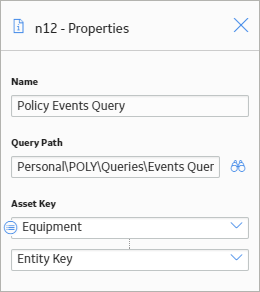The Properties window for a Query node contains the items that are described in the following table.
|
Item |
Description |
Notes |
|---|---|---|
|
Query Path |
Specifies the path to the query that will run when the policy is executed. |
You can enter the path manually, or
you can browse to the query by selecting The query that you choose must meet the following criteria:
|
|
Query section |
Provides values to any query prompts. |
One Query section appears for each prompt in the selected query. The label that appears after Query: identifies the prompt caption. You can select |


